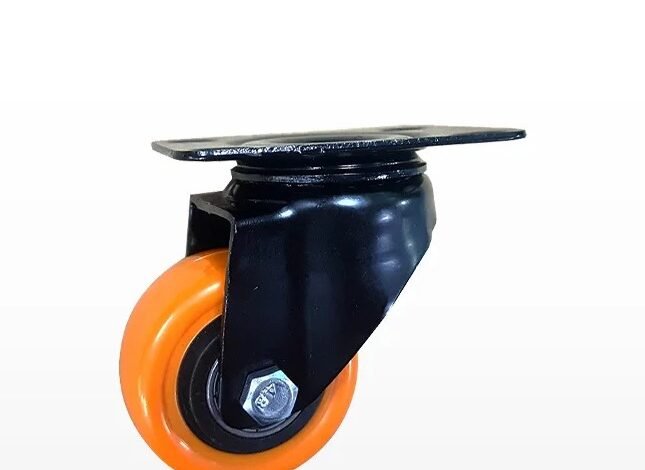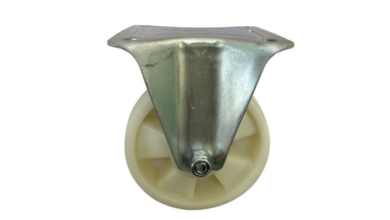
Introduction
Fixed caster wheels play a crucial role in material handling, ensuring smooth and stable movement of heavy loads in warehouses, factories, and industrial settings. These wheels are designed for durability, but without proper maintenance, they can wear out prematurely, leading to inefficiencies, safety hazards, and increased replacement costs.
In this blog, we will explore the best maintenance practices to extend the lifespan of fixed caster wheels and ensure optimal performance.
Why Maintenance Matters for Fixed Caster Wheels
Routine maintenance of fixed caster wheels is essential for several reasons:
- Prevents Unexpected Failures: Regular inspections reduce the risk of breakdowns, ensuring smooth operations.
- Enhances Safety: Well-maintained wheels minimize the chances of accidents caused by sudden wheel failure.
- Reduces Operational Costs: Proper care prolongs wheel life, reducing the frequency of replacements and maintenance costs.
- Improves Efficiency: Well-maintained wheels reduce rolling resistance, making material handling more efficient and less labor-intensive.
By implementing a structured maintenance routine, businesses can avoid costly downtime and improve workplace safety.
Best Maintenance Practices for Fixed Caster Wheels
1. Conduct Regular Inspections
Routine visual and physical inspections are the first step in preventing wheel-related issues. Look for the following signs of wear and tear:
- Cracks or Deformations: Any visible damage on the wheel surface can compromise its structural integrity.
- Flat Spots: Uneven wear can cause vibration and difficulty in movement.
- Rust or Corrosion: This is common in metal components and can weaken the wheel over time.
- Loose or Worn Fasteners: Check if bolts, nuts, and mounting plates are secure to avoid detachment during operation.
It’s best to perform inspections weekly in high-usage environments and monthly for low-traffic applications.
2. Keep Wheels Clean and Debris-Free
Dirt, dust, and debris accumulation can lead to wheel jams and increased rolling resistance. Follow these cleaning guidelines:
- Use a dry cloth or compressed air to remove dust and small particles.
- For stubborn grime, clean wheels with a mild detergent and water.
- Avoid using harsh chemicals that might degrade wheel material.
- Inspect the wheel surface after cleaning to ensure no damage has occurred.
Regular cleaning prevents buildup that could interfere with smooth movement and reduce wheel lifespan.
3. Lubricate Bearings and Axles
Lubrication is essential to keep fixed caster wheels rolling smoothly. Without proper lubrication, friction increases, leading to excessive wear.
- Apply high-quality grease or industrial lubricant to bearings and axles at least once every three months.
- Avoid over-lubricating, as excess grease can attract dirt and debris.
- Use lubricants suited for the environment (e.g., heat-resistant lubricants for high-temperature areas).
A well-lubricated wheel assembly ensures effortless movement, reducing strain on equipment and personnel.
4. Monitor Load Capacity Compliance
Every caster wheel has a specific load rating, and exceeding this capacity can lead to premature failure. Overloaded wheels can develop cracks, flat spots, or even break under stress.
- Check manufacturer specifications to ensure the wheels match the load requirements.
- Distribute weight evenly across all wheels to prevent excessive pressure on a single wheel.
- Use additional wheels if needed to balance heavy loads properly.
Maintaining appropriate load limits will extend the lifespan of fixed caster wheels and prevent sudden failures.
5. Replace Worn-Out Wheels and Components
Even with regular maintenance, fixed caster wheels will eventually wear out. Knowing when to replace them is crucial to maintaining efficiency and safety.
Signs that indicate the need for replacement:
- Deep cracks or excessive wear on the wheel surface.
- Bearings that produce noise or resistance during movement.
- Persistent wobbling or misalignment.
- Difficulty in rolling even after cleaning and lubrication.
Replacing damaged wheels promptly prevents further damage to carts, floors, and other equipment.
6. Use the Right Wheels for the Environment
The lifespan of fixed caster wheels depends significantly on the environment in which they are used. Consider the following factors:
- Floor Type: Harder wheels (like steel or cast iron) are ideal for rough surfaces, while softer wheels (like rubber or polyurethane) work best on delicate floors.
- Exposure to Chemicals: If the environment has exposure to oils, acids, or moisture, choose corrosion-resistant wheels.
- Temperature Conditions: High-temperature environments require heat-resistant wheels to prevent material degradation.
Selecting the appropriate wheel type for the working conditions ensures better longevity and performance.
7. Secure and Tighten Mounting Hardware
Loose mounting hardware can lead to misalignment, wobbling, and unsafe operations. Regularly check:
- Bolts and Screws: Tighten any that have loosened over time.
- Mounting Plates: Ensure they are properly aligned and securely attached to equipment.
- Brackets and Frames: Check for bending or misalignment that may affect wheel function.
Properly secured hardware helps maintain wheel stability and extends the working life of fixed caster wheels.
8. Rotate and Replace Wheels as Needed
For carts and equipment with multiple wheels, rotating them periodically helps balance wear and tear. This prevents excessive wear on one side and ensures even distribution of stress.
- Rotate wheels every three to six months for high-usage equipment.
- Keep spare wheels on hand to replace damaged ones quickly.
By following a scheduled wheel rotation plan, businesses can maximize the usability of their caster wheels.
Conclusion
Proper maintenance of fixed caster wheels is key to ensuring long-lasting performance, reducing costs, and enhancing workplace safety. By implementing routine inspections, keeping wheels clean, lubricating bearings, monitoring load capacities, and using the right wheel materials, businesses can extend the life of their caster wheels significantly.
Investing in high-quality fixed caster wheels and following these best practices will improve efficiency, reduce downtime, and create a safer working environment.
Would you like additional recommendations on specific wheel types for your industry? Let me know!

